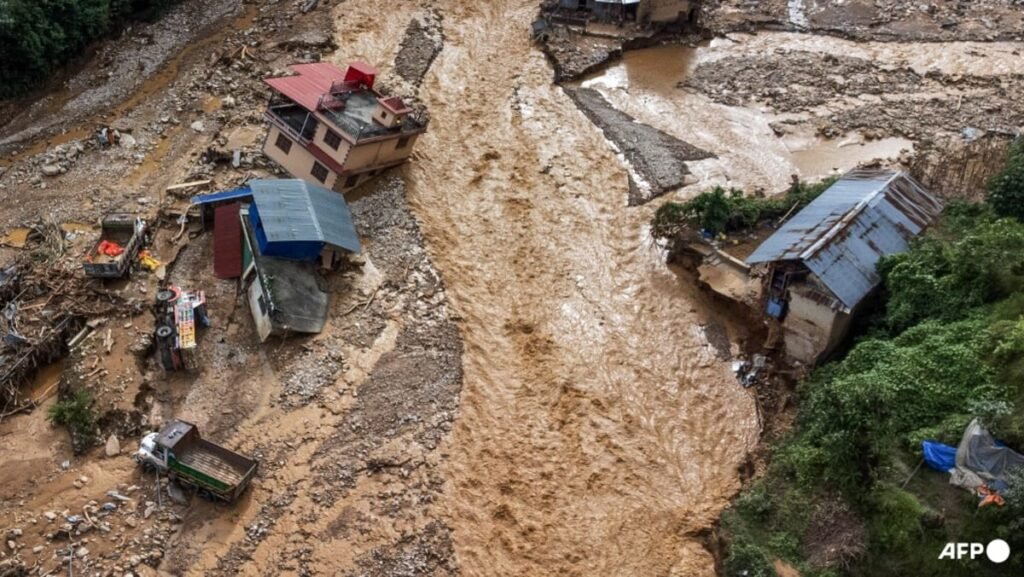Survivors of the devastating monsoon floods in Nepal criticized the government for its inadequate relief efforts following a disaster that claimed the lives of at least 218 people. The floods and landslides that occur during the monsoon season in South Asia are becoming more severe due to climate change, with entire neighborhoods in Kathmandu and remote villages in the Himalayan country being affected. One resident in Kavre district, east of Kathmandu, expressed frustration over the lack of assistance, noting that without accessible roads, no aid had reached them.
The floods particularly affected Kathmandu’s poorest residents who live in slums along the banks of rivers like the Bagmati. A slum resident, Man Kumar Rana Magar, highlighted the challenges faced by those in crisis, including being relocated to a school for shelter and then being forced to leave prematurely when classes resumed. Magar’s sentiments revealed a deep distrust in the government’s ability to care for its citizens, especially the most vulnerable, questioning how they will handle the needs of others if they cannot support those in close proximity to the seat of power.
The devastating impact of the floods has left survivors feeling abandoned and overlooked by authorities, with limited access to essential resources and support. The lack of aid in parts of the country, despite the scale of the disaster, has raised concerns about the government’s response to natural disasters and its ability to provide assistance to those in need. The challenges faced by affected communities, including damage to infrastructure and loss of life, highlight the urgency for a more robust and efficient relief system to prevent further suffering during future disasters.
Criticism of the government’s relief efforts underscores broader issues of inequality and poverty that have amplified the impact of the floods on vulnerable communities in Nepal. The disproportionate impact on the poorest residents, who are often forced to live in high-risk areas due to housing insecurity, highlights the need for a comprehensive approach to disaster response that addresses underlying social and economic disparities. The floods have laid bare the urgent need for improved infrastructure, emergency preparedness, and support systems to ensure that all residents receive timely and effective assistance during times of crisis.
The stories of survivors in Nepal reveal the resilience and determination of communities in the face of adversity, as they struggle to rebuild their lives and homes in the aftermath of the floods. Despite the challenges they have faced, residents have come together to support each other and advocate for better assistance from the government. The experiences of survivors serve as a reminder of the importance of community solidarity and collective action in times of crisis, as well as the critical role of government leadership in ensuring the safety and well-being of all citizens.
Moving forward, it is crucial for the government of Nepal to prioritize the needs of those affected by the floods, ensuring that relief efforts are swift, coordinated, and inclusive of all vulnerable communities. This requires a commitment to addressing the underlying issues of poverty, inequality, and inadequate infrastructure that have compounded the impact of natural disasters on marginalized populations. By investing in disaster preparedness, response mechanisms, and social safety nets, Nepal can strengthen its resilience to future floods and ensure that all citizens are protected and supported during times of crisis.

